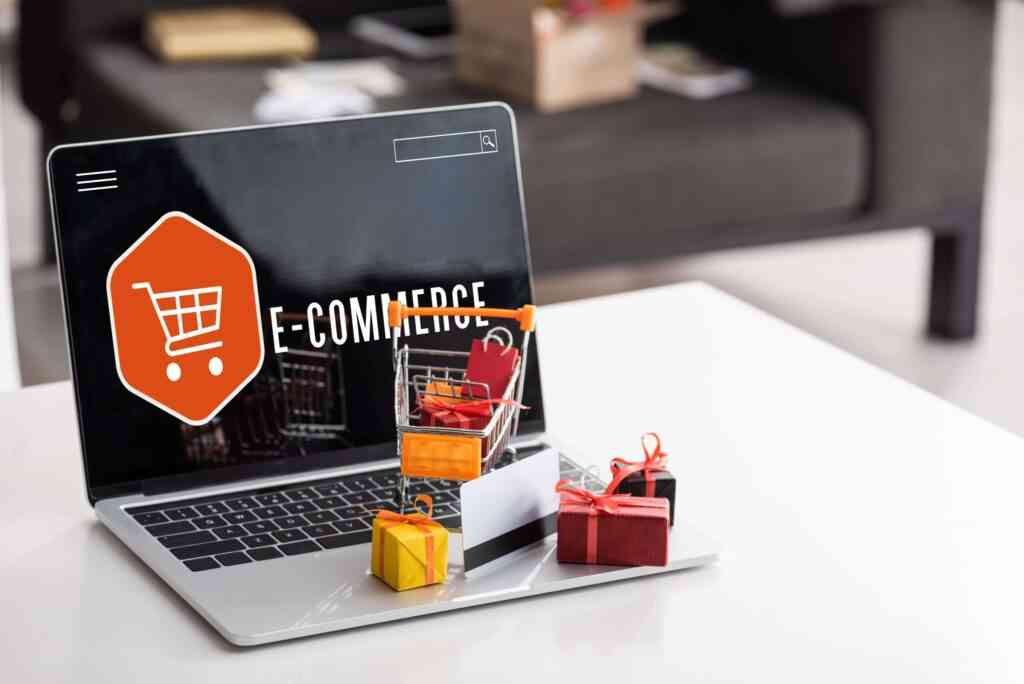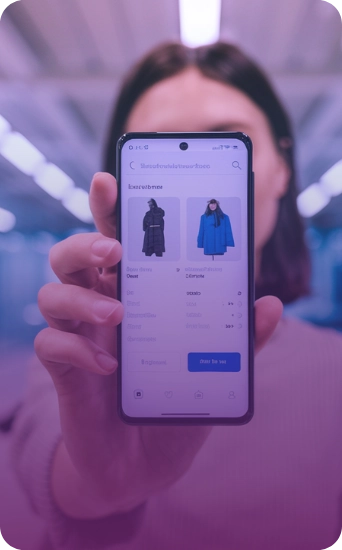Performance in online stores to sell more

Talking about performance in online stores isn't just about pages that load faster. It's about how every second counts for the consumer and how this directly impacts sales. For those in charge of a commercial operation, understanding the role of performance may seem technical or complicated, but it is an essential part of increasing conversions and delivering a shopping experience that builds customer loyalty. As a front-end development manager at a fullcommerce company focused on technology and the end consumer, I see on a daily basis how performance is connected to various areas of the business, including logistics, customer service, marketplaces and the media and UX teams. This article seeks to clarify, in a practical and accessible way, how to optimize the performance of an online store and why this should be a priority for anyone who wants to grow in e-commerce. Why does performance matter? The online shopping experience needs to be simple, fast and reliable. Studies show that slow pages can drastically reduce sales, because consumers don't wait: if the store doesn't deliver a fluid experience, they abandon the cart and go to a competitor. Now think about the impact of this on your business. A store that takes too long to load can frustrate paid media campaigns, waste opportunities on marketplaces and even generate more work for customer service, with consumers questioning problems on the site. All this generates costs and reduces profit margins. On the other hand, a fast and efficient operation creates consumer confidence and improves the entire purchase journey, from product research to checkout. Connecting areas to improve performance An efficient online store doesn't just depend on technology. It needs integration between the logistics, customer service, marketplaces and media areas. Let's explore how these areas connect with performance: 1. Logistics Consumers want to know precisely when they will receive their order. A logistics system that is well integrated with the website allows delivery times to be shown in real time at the checkout. This reduces drop-outs, improves the experience and creates predictability. However, if the shipping information is loaded slowly or is wrong, the customer will give up on the purchase. 2. Customer service When a website takes a long time to load or has errors, the first impact is on customer service, which receives more complaints. This additional flow of calls and emails could be avoided with a faster and more stable store. In addition, feedback from customer service is essential for identifying points for improvement in the digital experience, such as confusing forms or lengthy checkout steps. 3. Marketplaces If your store also operates on marketplaces, you need to ensure that stock and price information is updated quickly. Marketplaces penalize sellers for inconsistencies, and this can mean a loss of visibility for your products. In addition, the performance of the main site reflects on the experience of the customer who, on discovering your brand on a marketplace, may look for more information directly on your online store. 4. media and UX Digital media campaigns drive traffic to the site, but if the page doesn't load quickly, the investment is lost. That's why the development team and the media agency must work together to ensure that landing pages are fast and optimized for ads. In addition, UX (user experience) helps to design an intuitive and pleasant website, while technical development ensures that it works flawlessly. Performance and ROI: a direct relationship For those working in sales, an important metric is ROI (Return on Investment). Every dollar invested in paid traffic or marketplaces must bring a return. However, if the site is slow, part of this investment is lost. A practical example: during Black Friday, traffic to your store can increase by 50% or more. If the infrastructure can't cope with this volume, the site can crash, and sales are directly impacted. A page optimized to load quickly on any device ensures that more customers complete their purchases, increasing ROI. How to improve performance without being technical If you don't have a technical background, you can still ask your team or suppliers the right questions: - Is the site fast on mobile? Today, most online purchases take place on mobile devices. Make sure the site works well on these devices. How long does it take for a customer to complete a purchase? Simplifying checkout steps can significantly increase conversions. Are the most accessed pages optimized? Focus on the best-selling products and the landing pages of media campaigns. Performance in e-commerce is about more than speed: it's about offering the best possible customer experience while increasing operational efficiency. Fast, easy-to-navigate online stores that are well integrated with logistics, customer service, marketplaces and media not only convert more, but also create a loyal customer base. Regardless of the size of your operation, making performance a priority is essential to compete in an increasingly demanding market. And this starts with all areas of the business working together, always focusing on the end customer and the growth opportunities that e-commerce offers.
Are you ready for the next step? Learn how to start your e-commerce in 2025

In recent years, e-commerce has shown accelerated growth around the world. In Brazil, by 2024, online sales are expected to exceed R$ 350 billion, driven by the increase in the number of digital consumers and the greater frequency of purchases. This scenario of continuous expansion leads us to an important reflection: What is the next step for my e-commerce? But the most important question to answer is: do you have a well-defined strategy for your e-commerce? Without this solid foundation, it is impossible to plan the scalability of the business efficiently. Having a clear strategy is like having a map that guides decisions and sets priorities. This is what enables sustainable and competitive growth. But before taking the next steps towards expansion, the starting point must be a careful analysis of the current operation. Understanding strengths, identifying weaknesses and mapping out opportunities for improvement are essential steps to building a successful e-commerce business. Importance of KPIs In order to scale an e-commerce business efficiently, it is essential to carry out a detailed analysis of the main performance indicators, the famous KPIs. This data acts as a complete X-ray of the operation, highlighting bottlenecks that may be limiting growth and directing efforts to the areas that really make a difference. Among the most relevant KPIs (apart from DRE) to monitor in your e-commerce operation are: Conversion rate: assesses how well the site manages to turn visits into purchases. Average ticket: reveals the average amount spent per customer on each order. CAC (Customer Acquisition Cost): indicates how much it costs, on average, to acquire a new customer. LTV (Lifetime Value): calculates the total value generated by a customer throughout their relationship with the brand. Reverse logistics: measures the costs and efficiency of managing returns. Items per order: indicates the average number of products purchased per transaction. OTIF (On Time, In Full): evaluates the delivery of complete orders within the stipulated timeframe. Contact rate: monitors the percentage of customers who need to contact Customer Service to resolve issues. Analyzing these indicators in depth allows you to understand the real performance of e-commerce and make strategic decisions that have a direct impact on results. After all, an action plan based on data is the basis for identifying opportunities and prioritizing changes with a focus on sustainable growth. After analyzing the KPIs, the next step is to use this data to identify bottlenecks and implement a strategic plan to overcome them. Among the various possibilities, expanding the product portfolio stands out as an effective solution for attracting new customers and increasing the average ticket. Here are some tactics that can make a difference: Creating kits: Combining complementary products in a single package not only increases perceived value, but also encourages higher-value purchases. Using CRM for repurchase: Customer relationship management tools allow you to segment your base and send personalized offers, increasing the chances of loyalty. Exclusive products or pre-sales: Offering items that can only be found in your e-commerce helps to differentiate the brand and attract consumers who are looking for something unique. Complementary services: Options such as extended warranties, technical assistance and product customization add value to the customer experience and strengthen the bond with the brand. With these strategies, your e-commerce not only delivers differentials, but also positions itself more competitively in the market, ready to grow sustainably. Invest in the experience The customer experience plays a fundamental role in the success of any e-commerce, and the adoption of innovative technologies can take this experience to a new level. The use of artificial intelligence in customer service, with chatbots and virtual assistants, not only reduces costs, but also speeds up service. Personalized recommendation systems, which suggest products based on the customer's history, increase conversions. Predictive analysis tools, on the other hand, help to optimize stocks and avoid stock-outs, providing a more efficient and satisfying purchasing journey. Essential points for growth Having a robust e-commerce platform is crucial to supporting increased traffic and sales. It's important to focus on a few key points: Fast loading: Slow sites compromise the user experience and negatively impact SEO. SEO: Investing in search engine optimization is fundamental to guaranteeing organic visibility. Purchase journey: Simplifying the purchase process helps reduce cart abandonment rates. Logistics is a happy customer Logistics, essential for e-commerce, can be a decisive differentiator in customer satisfaction. Staff productivity is key to ensuring logistical success, and initiatives such as training and automation boost operational efficiency. Strategic freight negotiations, with competitive terms and attractive costs, meet public expectations. In addition, well-structured processes minimize errors, optimize flows and speed up deliveries, ensuring a more agile and efficient operation. The market is growing Scaling e-commerce requires planning, execution and constant monitoring. By developing a well-defined strategy, based on careful analysis of KPIs and the adoption of good practices in products, technology, platform and logistics, it is possible to achieve significant results and sustain growth in the long term. The e-commerce market is in full evolution. In order not to be left behind, you need to act quickly and precisely. Is your brand ready to take the next step?
4 reasons to create your e-commerce and sell beyond the marketplaces

Check out how Social Digital Commerce can help you sell digitally Selling on marketplaces is an opportunity for more people to get to know and buy your products, right? But have you ever thought about the advantages of creating your own sales channel? Nicolas Fernandes, CSO at Social Digital Commerce, has listed four good reasons and a bonus tip for you to create your own e-commerce and sell more. Check it out: Bonus tip: count on the expertise of Social Digital Commerce, which has a complete business ecosystem to help you from the creation to the management and logistics of your e-commerce to provide a genuine and positive experience for your customers! We help you choose the best sales strategy for your business so that you can dedicate yourself to developing and offering the best products. To make this possible, we at Social have structured ourselves into 4 service hubs that unite the digital, retail, marketing and even internationalization fronts for your business. It's full commerce working for the growth of your business, and all in a personalized way for your audience. Go here and talk to our experts now.
The growth of the publishing market and its contribution to e-commerce

The publishing market has experienced significant growth in recent years. The arrival of TikTok in Brazil boosted this movement, as young users of the app began to publish videos on various topics, including books. Terms such as "booktokers" and "bookinfluencers" have become commonplace, referring to influencers and celebrities who dedicate their content to the literary world. This influence has stimulated interest in reading among young people and opened up new opportunities for authors and publishers to connect directly with their target audience. Generation Z plays a key role in various market sectors today. Young people, who spend more time on the app, consume the content and take the opportunity to influence their friends to also start consuming and engaging with the same content. As a result, "trends" are launched, which are the trends of the moment and are a huge hit both inside and outside the app, generating more purchases and demand for the products that this generation consumes, leading to sales in various sectors, including e-commerce. As a result, the publishing market has expanded considerably, leading publishers to increase their sales and invest in e-commerce to better serve their customers and satisfy consumer demands. In 2023, the turnover of the publishing market in Brazil was approximately R$2.52 billion, with around 54.4 million books sold, registering a slight drop of 0.78% compared to 2022. In the e-commerce sector, turnover in 2023 reached R$186 billion, according to data from the E-commerce Brasil portal. Although the specific data on the publishing market's e-commerce turnover is not detailed separately, it is clear that the sale of books contributes significantly to the total profits in this segment. One example of lucrative turnover in the book market within e-commerce took place during Black Friday 2022. The publisher Darkside, a specialist in the Dark book segment (true crime, suspense, horror, comics and fantasy), adopted a strategy with Social Digital Commerce and played a key role in the management, logistics and sales strategy during this period, developed through the Digital Management hub. The result was more than 10,000 books sold that were delivered over four days of Black Friday, a historic milestone for literature. Black Friday 2023 was also an example of rich sales, where the brand exceeded more than 10,000 orders, totaling 38,000 items sold during the entire month. As a result, it is possible to foresee increasing growth in the publishing market, with publishers and bookstores investing more and more in e-commerce to boost sales and provide a differentiated and satisfying customer journey.
Generation Z: the future of e-commerce that values quality, product customization and the shopping experience

Born between 1995 and 2010, they are hyper-connected and consume dynamic content on the internet The years go by, technology advances, new generations occupy environments and arrive in the digital universe. Generation Z, which includes people born between 1995 and 2010, is an example of how consumer evolution is dictated. After all, they have experienced all the technological advances and are entering the job market and the digital world. Gen Z are immersed in globalization, are hyper-connected and consume dynamic content, and 98% of people from this generation are connected to the internet, according to data released by the Pew Research Center. In addition to the above characteristics, they are also known for being very pragmatic, but how does this relate to e-commerce and the digital market? We start with the fact that people from this generation seek out and consume content from digital influencers, making the famous reviews stand out on the internet, which provides value for brands and content creators. This is a key point of communication, purchase and consumption for companies. When we talk about buying and consuming, we need to point out that Gen Z is very concerned about the shopping experience, product customization and quality, and will even pay more money when purchasing a product if these prerequisites are part of the experience. When it comes to purchasing, we also have to mention payment methods. They play a fundamental role in the way Generation Z behaves in the digital universe, because with all the technological advances they choose to "get away" from traditional means of payment such as banks, for example. For the experience to be successful, websites/e-commerce must be dynamic and modern. Modernity, navigability, advanced technology and attractive content are some of the main points that enhance the shopping experience and encourage consumption among Generation Z. To sell to the Gen Z audience, it's important to emphasize ease, quality and the purpose of the brand, after all, 2.5% of them agree to buy from the same store again if the first purchase was negative. In summary: Generation Z is the future of e-commerce, they are pragmatic, up-to-date and connected. They value a good shopping experience, use social networks full time and value a shopping experience with personalization, no errors and good products. Discover the unlimited and personalized solutions that Social offers your business! Click here and talk to our experts. *Source: Jornal Empresa e Negócios
Free Shipping? Yes! Check out which Social customers are participating in Free Shipping Day and enjoy!

Will there be Free Shipping? Yes, on April 28th! Free Shipping Day was created in the United States in 2008 and has been consolidated in Brazilian e-commerce with the aim of increasing sales, building loyalty and providing the customer with a great shopping experience. Social Digital Commerce has Distribution Centers in Brazil and around the world, which make it easier to ship orders placed on special dates, such as Free Shipping Day. Check out the Social Digital Commerce partners who will be taking part in Free Shipping Day: Enjoy!
DREX: Brazilian digital currency that promises to be a new form of online payment

By the end of 2024, the Central Bank promises to launch a Brazilian version of CBDC In recent years, many technological changes have taken place to improve online transactions and make life easier for Brazilians. The most recent was PIX, which revolutionized the way digital and physical purchases are paid for. By the end of 2024, the Central Bank promises to launch a new form of online transaction: the DREX (Digital Real Electronic), a digital currency that is a continuation of virtual solutions. DREX will become a new form of online payment, being a Brazilian version of the so-called CBDC (Central Bank Digital Currencies). Other countries such as Sweden, China and South Korea already have a transaction system similar to DREX. The expectation is that the digital currency will be used through financial operations that are already available, such as transfers, payments and loans, with the aim of simplifying transactions and reducing the costs involved in this process. It will be possible to use it in smart contracts and in high-value transactions, for example, purchases of vehicles, real estate and government bonds. One of the distinguishing features of DREX is that it allows you to program the money transaction automatically once a certain condition has been met. DREX can be converted directly from money deposited in virtual wallets and will be carried out by fintech banks, cooperatives, brokers and other financial institutions authorized by the Central Bank. Institutions that choose to make DREX available to their users will have to adopt a specific technology to carry out the transactions called Block Chain - which guarantees greater security, speed and transparency in the transmission of information. Difference between DREX and PIX? Despite some similarities, PIX and DREX are different. Basically, PIX is the form of payment by which we transfer money and DREX is the money that will be transferred. Source: Nuvem Shop Would you like to find out more about our services and implement digital solutions in your company? Get in touch with our experts!
Up-to-date technology for exceptional e-commerce results and solutions

When it comes to online shopping, it's crucial that the technology is modern in order to deliver more quality to the market and to the customer. This is even more the case today because of how the public views technology and the internet. According to a survey published by DataReportal at the beginning of 2023, the influence that the internet has on Brazilians' lives is 84.4% (the global average is 64.4%), totaling 9h32min on the internet. But what does this mean for the e-commerce and mobile markets? Basically everything, because 97.1% of users make purchases using their cell phones. This implies a need to adapt to cutting-edge technology in order to provide users with a safe experience and exceptional solutions. Check out the full article on the E-commerce Brasil website: https://bit.ly/3U2hVc4
Social Digital Commerce advances in Latin America's e-commerce market

Social Digital Commerce, a company that has been developing e-commerce businesses for seven years, is moving ahead with its expansion plan for Latin America after structuring its market in two other continents: Europe and Asia. With operations in the United States, Portugal and China, the company's goal is to hire more than 400 new professionals by the beginning of 2024 and expand its presence in countries such as Mexico, Chile, Argentina and Colombia. Social Digital Commerce offers solutions for companies that want to sell more in the digital environment, multiply sales, expand into the international market or do business beyond digital. In this sense, four service hubs encompass all the solutions for clients wishing to leverage their business, Digital Management being one front that provides the most technological and innovative solutions for digital sales. Read the full article on the E-commerce Brasil website: https://www.ecommercebrasil.com.br/noticias/social-digital-commerce-avanca-america-latina
Five trends that promise to be on the rise in the e-commerce market in 2024

The novelties aim to build customer loyalty and provide a personalized buying journey New year and new trends, right? In the e-commerce market, this is no different! For 2024, we've selected five innovations that promise to be on the rise in digital shopping environments. The trends aim to build customer loyalty and provide a personalized shopping journey. The new features for e-commerce are: Phygital retail This is the integration of online and offline media, where the consumer is given the right to choose their own shopping journey. In this modality, customers are offered more practical, intuitive and efficient alternatives to solve their purchasing problems. Smart Showcases This trend is used in conjunction with artificial intelligence, where a virtual salesperson uses a system to recommend products according to the user's profile and behavior. In these showcases, there is the option of personalization which is carried out with the help of data analysis extracted from the user's browsing databases, so it is possible to identify and recommend products. Conversational Commerce Involves real-time conversations with consumers and sales are made via instant messaging applications and chats. Conversations can be done manually or automatically. This trend promises to be the pinnacle of sales. Online payment with biometrics This trend is designed to prevent fraud in online purchases. Online payment will be made using instant selfies to complete the credit card purchase on digital platforms. Augmented reality The aim is to combine the virtual with the real. In this trend, consumers will have the experience of seeing your product wherever they are, or even being able to see how it will look in the desired environment (in the case of furniture, for example). *Source: UX Group, Vindi and Real Trends. How about having some of these trends in your business? Get in touch with our team of experts.










